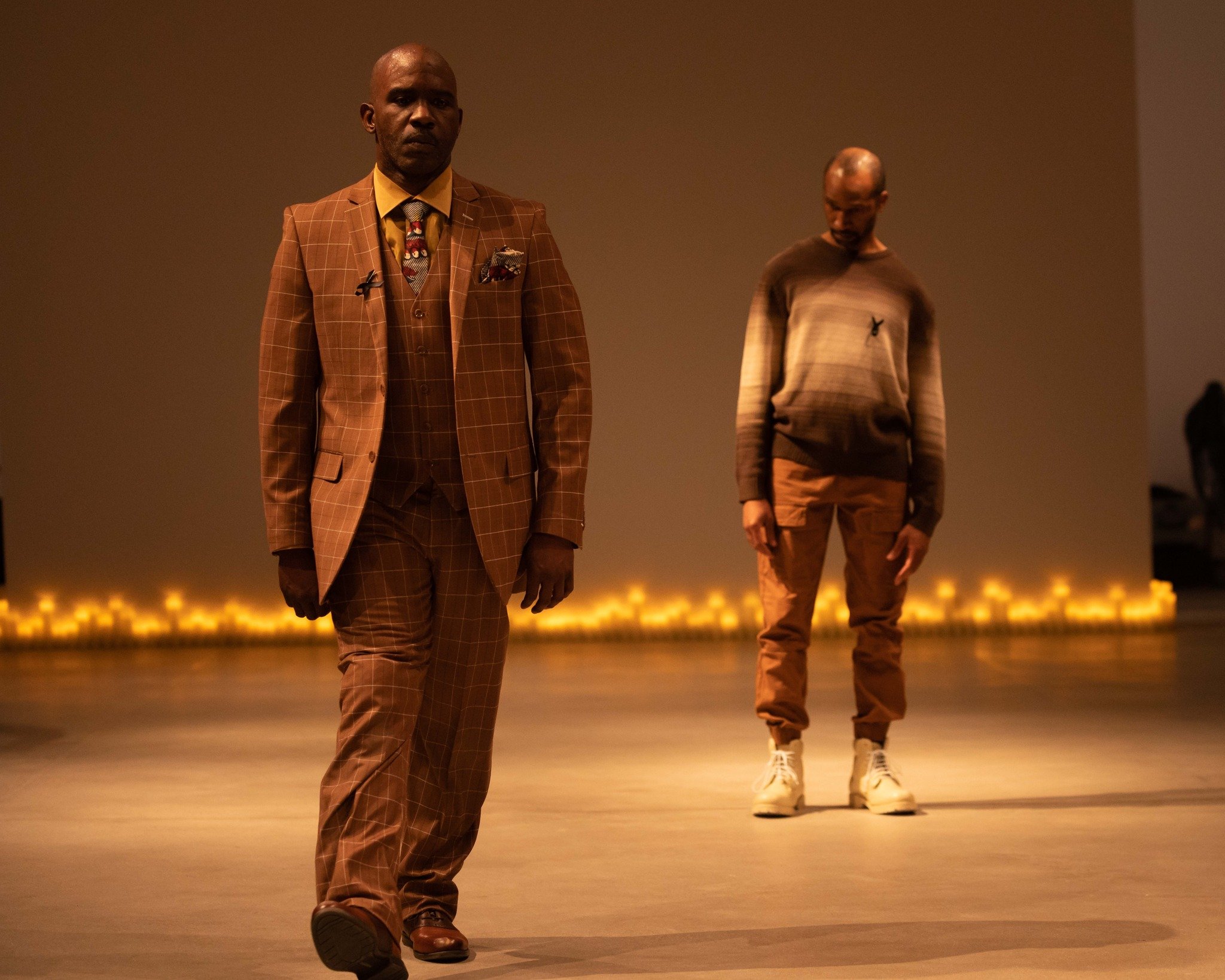What To Send Up When It Goes Down is intentionally created to be a freeing space for Black people and Black people only. Everyone else has the option to listen and learn.
The show of 7 cast members starts with making the mission clear: this is a healing space. What To Send Up When It Goes Down does not shy away from the conversation of police brutality and how it has traumatized and devastated Black people in America for centuries.
The play written by the critically-acclaimed playwright, Aleshea Harris, tells of the spiritual and physical deaths of Black people due to racialized violence. What To Send Up When It Goes Down gives insight into how Black bodies are harmed daily through white supremacy and the many ways that white people, white women specifically, flip the script and cry or make themselves the victim.
Alexandria talks to Jos about the ways she navigates working in a white space. | Photo taken by John R. Boehm.
The set-up of the space for the production is calming and reverent. The walls are filled with letters of encouragement from Black people, written presumably, before the launch of What To Send Up When It Goes Down. Each note goes into a brown wooden bowl and is placed at the altar. They are laid where candles are lit throughout the show.
The cast of What To Send Up When It Goes Down letting go of things and freeing themselves. | Photo by John R. Boehm.
There are no transition lights or spotlights. It is one fluid story of Black existence in America. Each cast member is dressed in dark or earth tones. The audience sits in chairs lined on both sides of the room, allowing closeness for what is happening in from of us as we observe the story being told.
The play begins with the depiction of a white woman. She is convinced that she has made it to where she is in life through her own efforts. She is educated. She is wealthy. She is triggered by the word “privilege.” She is flattered by the Black man in need of work and put off by the Black woman who will not flatter her. Her voice and tears are weapons she has no fear of using because it benefits her. She continually tells of how her “hands are clean.”
She goes back and forth between the Black male and Black female characters, telling of her distrust of the Black woman, MADE, because she is not friendly. Eventually, MADE fights back, and the two of them have to clean up the mess because we’ve seen what happens in America when white people are stood up to.
Whether it be the white woman with MADE, a separate discussion about carving a “Y” on his chest to fool the white people, how Black people have to navigate work, or even how Black people interact with white people in terms of friendship, What To Send Up When It Goes Down does not shy away from raw conversations surrounding Black life in America. The audience is constantly brought back to the way Black people are painted and who Black people are without the weight of monotony.
An integral part of the play is the in-between parts. One man walking back and forth running down a list of Black people murdered in America contrasted with singing and the cast reciting a schoolyard rhyme as they jump rope.
What To Send Up When It Goes Down is a space for healing and listening. It gives Black people the space to be free of the everyday things that weigh on them in a world not made for them. It is a dialogue that needs no permission to share the truth of the Black experience in America.
Photo by John R. Boehm.
_
Writer Bio:
Shonette Reed is the founder and editor of Resolute Magazine. The South Central Los Angeles native enjoys cooking, exploring, expansive conversations, and reading a good book when she's not working or planning for work.



